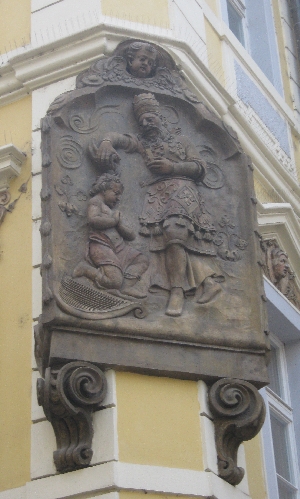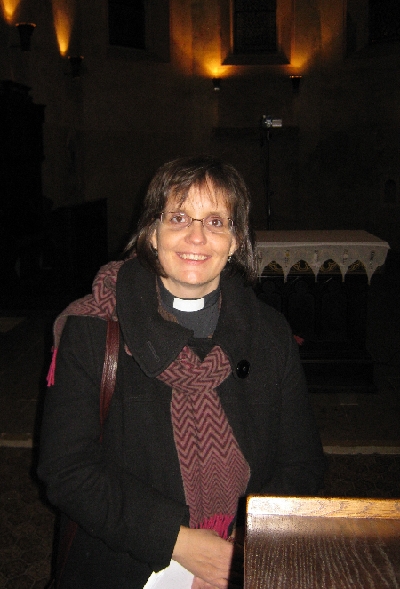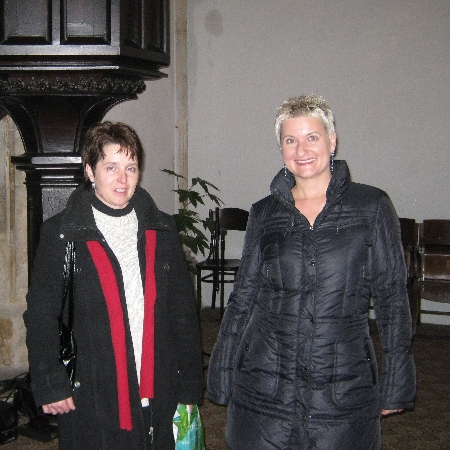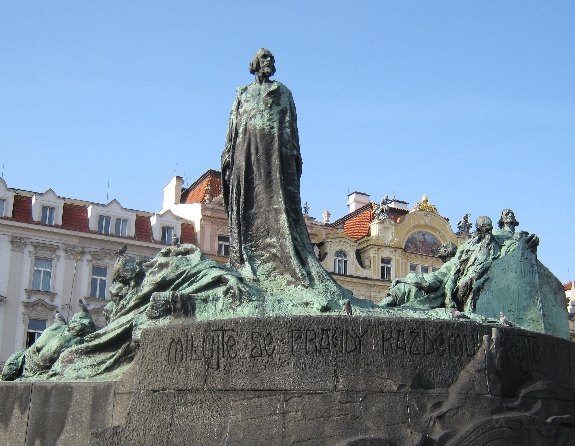
The photograph above is of the imposing statue of Jan Hus, located in Staromestské námestí/Old Town Square, in the centre of Prague. It is the work of the Czech sculptor Ladislav Jan Šaloun and was unveiled in 1915 to mark the five-hundredth anniversary of the death of Hus who was burnt at the stake on 6th July 1415.
Jan Hus was born around 1369 in the village of Husinec in South Bohemia. At a young age he moved to Prague, becoming a student at Charles University. He gained his Bachelor of Arts degree in 1393, his Master degree in 1396 and was ordained as a Roman Catholic priest in 1400.
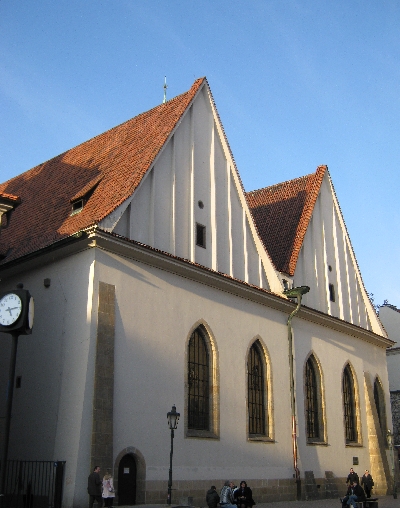
The building in Prague most associated with Hus is the Bethlehem Chapel. The original Chapel, completed in 1394, was built for the express purpose of the service of preaching rather than for the celebration of mass. In 1402, Hus was appointed Rector of the Bethlehem Chapel and took up residence in rooms immediately adjoining the Chapel
Over the following ten years, the preaching of Jan Hus drew large crowds to the Bethlehem Chapel. He was very much influenced by the teaching and writings of the early English Church Reformer John Wycliffe, and in his preaching, called for reform within the Roman Catholic Church. He was particularly outraged by the selling of papal indulgences to collect funds for military purposes.
However, there are two significant things which Hus did or advocated which are reflected in the way he is now remembered by most Czech people. Firstly, he preached and wrote in Czech rather than Latin as he wanted his hearers and readers to fully understand what he was saying. Secondly, he wanted worshippers to be able to receive communion in both kinds – both bread and wine – and for lay people not to be forbidden to receive the chalice.
After a papal edict of September 1412, prevented Hus from preaching in Prague, he withdrew to the South Bohemian countryside where he continued to preach under the open skies and where he also completed most of his writings. In October 1414, having been assured of safe passage, he travelled to Konstanz to attend a Church Council which had been called to resolve a variety divisive issues within the Church at that time including the existence of three different individuals each claiming to be Pope! However, as part of the proceedings of the Council of Konstanz, Jan Hus was tried, found guilty of heresy and condemned to death. He was burnt at the stake in Konstanz on 6th July 1415.
The supporters of Hus were outraged and the Hussite movement flourished following his death, bringing about the Bohemian Reformation. Sadly, there were divisions between those who desired moderate reform and those who wanted far more radical change within the Church. Eventually in 1620, at the Battle of White Mountain/Bilá hora on the outskirts of Prague, the army of the Holy Roman Emperor Ferdinand II defeated the forces of the Bohemian Estates and as a result, unreformed Roman Catholicism was reimposed upon Czech lands.
The Czech National Revival, which began in the late eighteenth century, regarded Hus as a Czech hero, not primarily for religious reasons but rather for political and cultural ones. His opposition to church control by the Vatican gave strength to those who opposed control of Czech lands by the Hapsburgs in the form of the Austro-Hungarian Empire. He preached and wrote in the Czech language and therefore was a focus for opposition to the Germanisation of government, education and culture in Bohemia and Moravia. Therefore the statue of Hus located in Staromestské námestí/Old Town Square, in the centre of Prague, is surrounded by figures of victorious Hussite warriors and the figure of a young mother symbolizing national rebirth.
The Bethlehem Chapel fell into a dilapidated state and was partially demolished in 1786. Three original walls remained standing within which a sizable apartment building was constructed in the 1830s. Following the establishment of an independent Czechoslovakia in 1918, there were moves by the new government to purchase the apartment complex and restore the Chapel. But nothing concrete ever materialised before the outbreak of World War Two.
At the end of the war in 1945, the apartment building was confiscated from its German owners and, between 1950 – 1954, the Bethlehem Chapel was restored with considerable care to its original form. Ironically this took place under the guidance of a Communist run Ministry of Culture. But even the Communists used the legacy of Jan Hus for their own purposes by portraying him as a proto-communist!

Inside the chapel, the earlier inscriptions on the walls have been restored on the basis of known texts with associated illustrations, as in this photograph. However, this second wall painting was not in the original chapel as it shows Hus being burnt at the stake!

All Czech Protestants also remember and celebrate Jan Hus and the symbol they use to do this is the chalice. This is because of Hus insisting that all Christian believers should receive communion in both kinds.

The picture on the left is of an Evangelical Church of Czech Brethren Church building in the Prague suburb of Žižkov. It too is called the Bethlehem Chapel/Betlémská kaple and was constructed in the cubist architectural style. On the left of the front façade is a bust of Jan Hus whilst on the right is a bust of John Calvin. But as can be seen in close-up detail below, above the front façade are a Bible and, on top of the Bible, a large gold chalice.


The photograph above is of a plaque on the outside of St. Clement’s Church which also belongs to the Evangelical Church of Czech Brethren. Like to statue in Old Town Square, this plaque was also erected on the 500th anniversary of the death of Jan Hus. With his picture, together with a chalice, thanks are given for ‘Svaté pameti otce Ceské Reformace – the holy memory of the Father of the Czech Reformation’.

